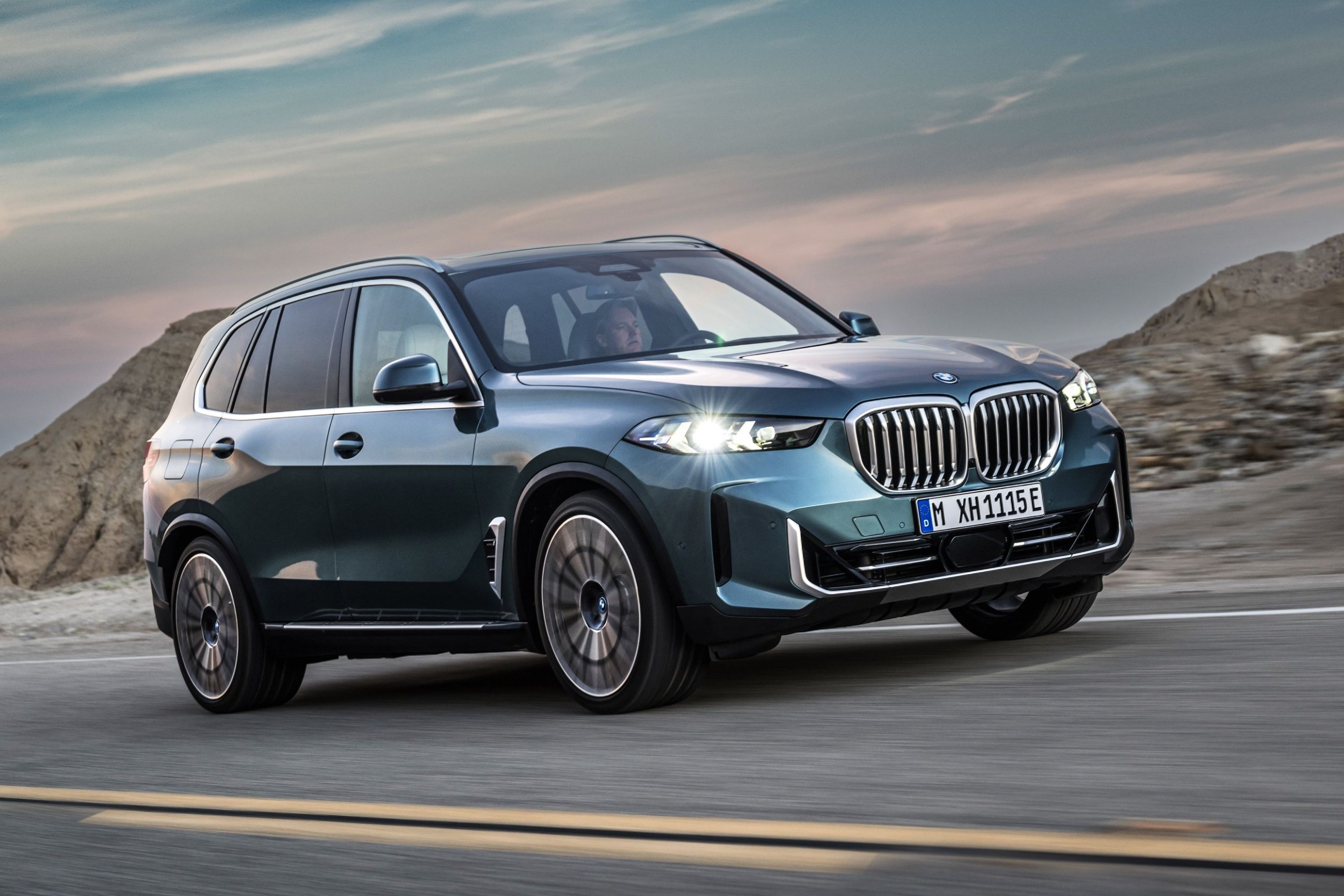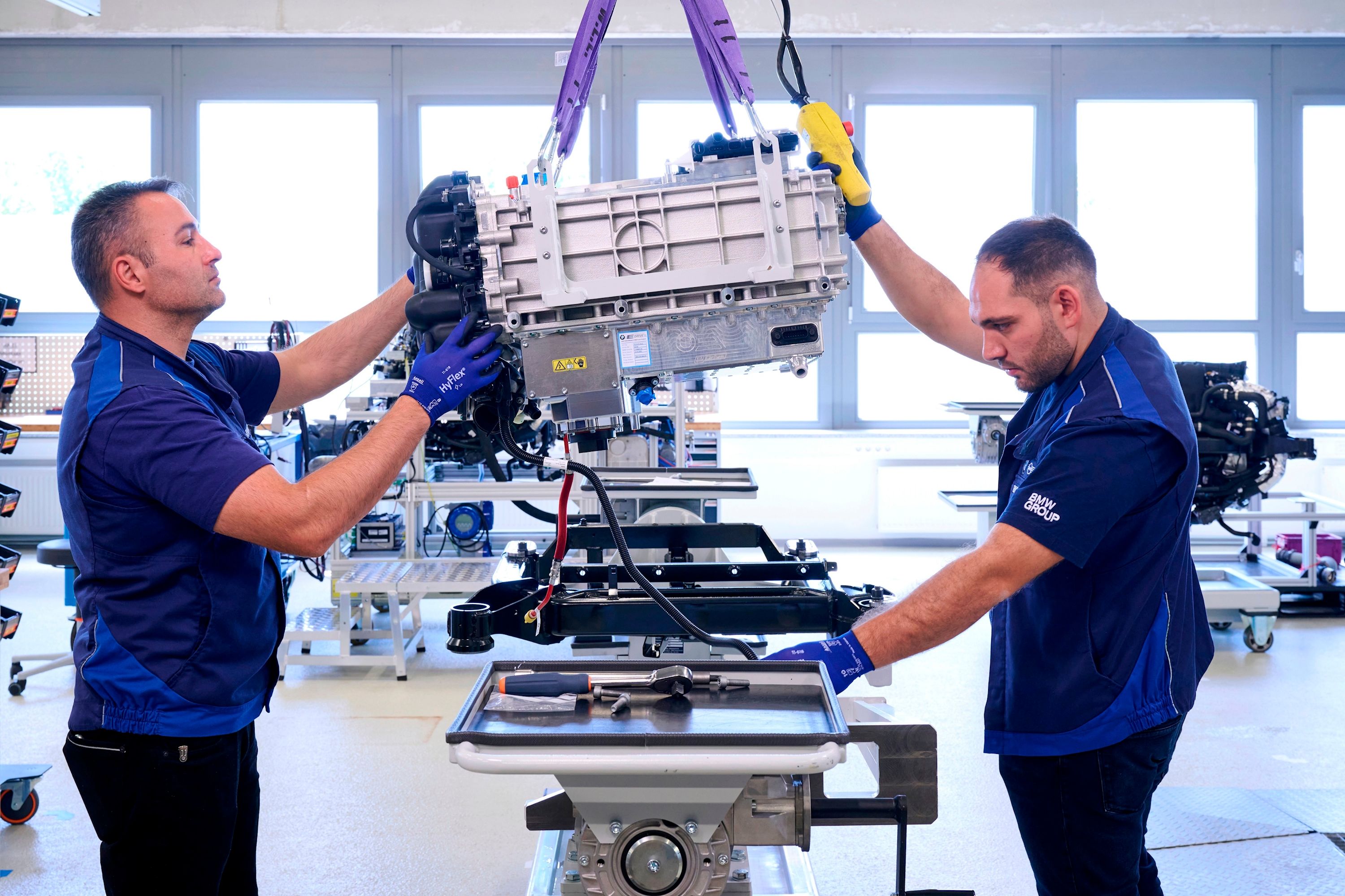
At the BMW i7 unveiling in New York, BMW's Chairman of the Board of Management, Oliver Zipse, spoke about the German brand's Neue Klasse revamp, explaining why its large luxury sedan is available with three different powertrains. In short, BMW is undergoing the most significant change in direction in its more than 100-year history. But that's true of most manufacturers as we enter the electric age.
BMW will be doing things differently, however. Instead of only investing in battery electric vehicles, it's also pouring money into the continued use of ICE, hybrids and plug-in hybrids, and hydrogen fuel cell vehicles. BMW is exploring every possible avenue instead of simply giving up on all forms of combustion.
This week, it moved focus away from its recent EV efforts to showcase the technology behind the upcoming BMW iX5 Hydrogen as it kickstarted production of that vehicle's most important element - the powertrain.
"As a versatile energy source, hydrogen has a key role to play on the road to climate neutrality," said Zipse. "And it will also gain substantially in importance as far as personal mobility is concerned. We think hydrogen-powered vehicles are ideally placed technologically to fit alongside battery-electric vehicles and complete the electric mobility picture. By commencing small-scale production of fuel cells today, we are demonstrating the technical maturity of this type of drive system and underscoring its potential for the future."
The iX5 Hydrogen will use BMW's second-generation fuel cell technology. This technology will not be incorporated into an all-new model but rather into the existing BMW X5 platform. While the iX5 Hydrogen will utilize a T-shaped hydrogen storage system, future fuel cell vehicles from BMW will use an innovative under-floor system we discovered in patent filings in August this year.
Speaking of the second-gen tech, BMW's Frank Weber, member of the board for development, said, "Our many years of research and development work have enabled us to get the very most out of hydrogen technology, We have managed to more than double the fuel cell's continuous output, while weight and size have both decreased drastically."
Weber is likely drawing a comparison with the 2015 BMW 5 Series GT Hydrogen Cell, which was also produced in limited numbers. The GT was powered by a 200-horsepower electric motor mounted on the rear axle.
By comparison, the iX5 Hydrogen can produce 369 hp from its fifth-gen electric motor supplied by a 170-hp hydrogen fuel cell and a high-performance battery.
The iX5 Hydrogen's complete powertrain consists of two hydrogen tanks, the fuel cell, and the electric motor. Production of this car will be extremely limited, which is why the tanks have been equipped within the existing chassis rather than developing new systems altogether. BMW has yet to announce how it will decide who gets to have it. Whoever owns the car can take comfort knowing it has been appropriately tested.
Earlier this year, BMW tested the iX5 Hydrogen in freezing conditions in Sweden, where it performed without fault. Cold conditions are typically where battery EVs don't perform well, so the fact that the FCEV powertrain worked so well bodes well for its future.
The fuel cells are being assembled by BMW experts at its in-house competence center for hydrogen in Munich. The individual fuel cells will be provided by Toyota, which has also been spending money on every possible future propulsion system. The two companies have been collaborating on fuel cell drive systems since 2013.
It won't be long now before BMW's first iX5 Hydrogens hit the road. The question is, will it provide a viable alternative to the brand's electrification strategy?

